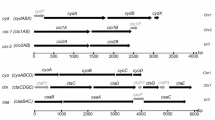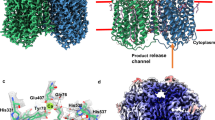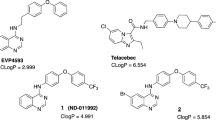Abstract
Shewanella species are a group of facultative Gram-negative microorganisms with remarkable respiration abilities that allow the use of a diverse array of terminal electron acceptors (EA). Like most bacteria, S. oneidensis possesses multiple terminal oxidases, including two heme-copper oxidases (caa3- and cbb3-type) and a bd-type quinol oxidase. As aerobic respiration is energetically favored, mechanisms underlying the fact that these microorganisms thrive in redox-stratified environments remain vastly unexplored. In this work, we discovered that the cbb3-type oxidase is the predominant system for respiration of oxygen (O2), especially when O2 is abundant. Under microaerobic conditions, the bd-type quinol oxidase has a significant role in addition to the cbb3-type oxidase. In contrast, multiple lines of evidence suggest that under test conditions the caa3-type oxidase, an analog to the mitochondrial enzyme, has no physiological significance, likely because of its extremely low expression. In addition, expression of both cbb3- and bd-type oxidases is under direct control of Crp (cAMP receptor protein) but not the well-established redox regulator Fnr (fumarate nitrate regulator) of canonical systems typified in Escherichia coli. These data, collectively, suggest that adaptation of S. oneidensis to redox-stratified environments is likely due to functional loss of the caa3-type oxidase and switch of the regulatory system for respiration.
Similar content being viewed by others
Login or create a free account to read this content
Gain free access to this article, as well as selected content from this journal and more on nature.com
or
References
Baker SC, Ferguson SJ, Ludwig B, Page MD, Richter OMH, van Spanning RJM . (1998). Molecular genetics of the genus Paracoccus: metabolically versatile bacteria with bioenergetic flexibility. Microbiol Mol Biol Rev 62: 1046–1078.
Baraquet C, Théraulaz L, Iobbi-Nivol C, Méjean V, Jourlin-Castelli C . (2009). Unexpected chemoreceptors mediate energy taxis towards electron acceptors in Shewanella oneidensis. Mol Microbiol 73: 278–290.
Borisov VB, Gennis RB, Hemp J, Verkhovsky MI . (2011). The cytochrome bd respiratory oxygen reductases. Biochim Biophys Acta 1807: 1398–1413.
Bretschger O, Obraztsova A, Sturm CA, Chang IS, Gorby YA, Reed SB et al (2007). Current production and metal oxide reduction by Shewanella oneidensis MR-1 wild type and mutants. Appl Environ Microbiol 73: 7003–7012.
Chang HY, Hemp J, Chen Y, Fee JA, Gennis RB . (2009). The cytochrome ba 3 oxygen reductase from Thermus thermophilus uses a single input channel for proton delivery to the active site and for proton pumping. Proc Natl Acad Sci USA 106: 16169–16173.
Charania MA, Brockman KL, Zhang Y, Banerjee A, Pinchuk GE, Fredrickson JK et al (2009). Involvement of a membrane-bound class III adenylate cyclase in regulation of anaerobic respiration in Shewanella oneidensis MR-1. J Bacteriol 191: 4298–4306.
Cruz-Garcia C, Murray AE, Rodrigues JLM, Gralnick JA, McCue LA, Romine MF et al (2011). Fnr (EtrA) acts as a fine-tuning regulator of anaerobic metabolism in Shewanella oneidensis MR-1. BMC Microbiol 11: 64.
Dong Y, Wang J, Fu H, Zhou G, Shi M, Gao H . (2012). A Crp-dependent two-component system regulates nitrate and nitrite respiration in Shewanella oneidensis. PLoS ONE 7: e51643.
Ducluzeau AL, Ouchane S, Nitschke W . (2008). The cbb 3 oxidases are an ancient innovation of the ___domain bacteria. Mol Biol Evol 25: 1158–1166.
Ekici S, Pawlik G, Lohmeyer E, Koch HG, Daldal F . (2012). Biogenesis of cbb 3-type cytochrome c oxidase in Rhodobacter capsulatus. Biochim Biophys Acta 1817: 898–910.
Fredrickson JK, Romine MF, Beliaev AS, Auchtung JM, Driscoll ME, Gardner TS et al (2008). Towards environmental systems biology of Shewanella. Nat Rev Micro 6: 592–603.
Fu H, Chen H, Wang J, Zhou G, Zhang H, Zhang L et al (2013). Crp-dependent cytochrome bd oxidase confers nitrite resistance to Shewanella oneidensis. Environ Microbiol doi:10.1111/1462-2920.12091.
Gao H, Barua S, Liang Y, Wu L, Dong Y, Reed S et al (2010a). Impacts of Shewanella oneidensis c-ype cytochromes on aerobic and anaerobic respiration. Microb Biotech 3: 455–466.
Gao H, Pattison D, Yan T, Klingeman DM, Wang X, Petrosino J et al (2008b). Generation and validation of a Shewanella oneidensis MR-1 clone set for protein expression and phage display. PLoS ONE 3: e2983.
Gao H, Wang X, Yang Z, Palzkill T, Zhou J . (2008a). Probing regulon of ArcA in Shewanella oneidensis MR-1 by integrated genomic analyses. BMC Genomics 9: 42.
Gao H, Wang X, Yang ZK, Chen J, Liang Y, Chen H et al (2010b). Physiological roles of ArcA, Crp, and EtrA and their interactive control on aerobic and anaerobic respiration in Shewanella oneidensis. PLoS ONE 5: e15295.
Gao H, Yang ZK, Barua S, Reed SB, Romine MF, Nealson KH et al (2009). Reduction of nitrate in Shewanella oneidensis depends on atypical NAP and NRF systems with NapB as a preferred electron transport protein from CymA to NapA. ISME J 3: 966–976.
Giuffrè A, Borisov VB, Mastronicola D, Sarti P, Forte E . (2012). Cytochrome bd oxidase and nitric oxide: from reaction mechanisms to bacterial physiology. FEBS Lett 586: 622–629.
Giuffrè A, D'Itri E, Giannini S, Brunori M, Ubbink-Kok T, Konings WN et al (1996). The caa 3 terminal oxidase of Bacillus stearothermophilus. J Biol Chem 271: 13987–13992.
Görke B, Stülke J . (2008). Carbon catabolite repression in bacteria: many ways to make the most out of nutrients. Nat Rev Microbiol 6: 613–624.
Gralnick JA, Brown CT, Newman DK . (2005). Anaerobic regulation by an atypical Arc system in Shewanella oneidensis. Mol Microbiol 56: 1347–1357.
Green J, Paget MS . (2004). Bacterial redox sensors. Nat Rev Micro 2: 954–966.
Han H, Hemp J, Pace LA, Ouyang H, Ganesan K, Roh JH et al (2011). Adaptation of aerobic respiration to low O2 environments. Proc Natl Acad Sci USA 108: 14109–14114.
Heidelberg JF, Paulsen IT, Nelson KE, Gaidos EJ, Nelson WC, Read TD et al (2002). Genome sequence of the dissimilatory metal ion-reducing bacterium Shewanella oneidensis. Nat Biotech 20: 1118–1123.
Kouzuma A, Hashimoto K, Watanabe K . (2012). Influences of aerobic respiration on current generation by Shewanella oneidensis MR-1 in single-chamber microbial fuel cells. Biosci Biotechnol Biochem 76: 270–275.
Lee HJ, Reimann J, Huang Y, Ädelroth P . (2012). Functional proton transfer pathways in the heme–copper oxidase superfamily. Biochim Biophys Acta 1817: 537–544.
Londer YY, Giuliani SE, Peppler T, Collart FR . (2008). Addressing Shewanella oneidensis “cytochromome”: the first step towards high-throughput expression of cytochromes c. Protein Exp Purif 62: 128–137.
Maier TM, Myers CR . (2001). Isolation and characterization of a Shewanella putrefaciens MR-1 electron transport regulator etrA mutant: reassessment of the role of EtrA. J Bacteriol 183: 4918–4926.
Marritt SJ, McMillan DG, Shi L, Fredrickson JK, Zachara JM, Richardson DJ et al (2012). The roles of CymA in support of the respiratory flexibility of Shewanella oneidensis MR-1. Biochem Soc Trans 40: 1217–1221.
Marrs B, Gest H . (1973). Genetic mutations affecting the respiratory electron-transport system of the photosynthetic bacterium Rhodopseudomonas capsulata. J Bacteriol 114: 1045–1051.
Meyer TE, Tsapin AI, Vandenberghe I, De Smet L, Frishman D, Nealson KH et al (2004). Identification of 42 possible cytochrome c genes in the Shewanella oneidensis genome and characterization of six soluble cytochromes. Omics 8: 57–77.
Murphy JN, Durbin KJ, Saltikov CW . (2009). Functional roles of arcA, etrA, cyclic AMP (cAMP)-cAMP receptor protein, and cya in the arsenate respiration pathway in Shewanella sp. strain ANA-3. J Bacteriol 191: 1035–1043.
Murphy JN, Saltikov CW . (2009). The ArsR repressor mediates arsenite-dependent regulation of arsenate respiration and detoxification operons of Shewanella sp. strain ANA-3. J Bacteriol 191: 6722–6731.
Pereira MM, Santana M, Teixeira M . (2001). A novel scenario for the evolution of haem-copper oxygen reductases. Biochim Biophys Acta 1505: 185–208.
Perrenoud A, Sauer U . (2005). Impact of global transcriptional regulation by ArcA, ArcB, Cra, Crp, Cya, Fnr, and Mlc on glucose catabolism in Escherichia coli. J Bacteriol 187: 3171–3179.
Pitcher RS, Watmough NJ . (2004). The bacterial cytochrome cbb 3 oxidases. Biochim Biophys Acta 1655: 388–399.
Puustinen A, Finel M, Haltia T, Gennis RB, Wikstrom M . (1991). Properties of the two terminal oxidases of Escherichia coli. Biochemistry 30: 3936–3942.
Reese MG . (2001). Application of a time-delay neural network to promoter annotation in the Drosophila melanogaster genome. Comput Chem 26: 51–56.
Saffarini DA, Schultz R, Beliaev A . (2003). Involvement of cyclic AMP (cAMP) and cAMP receptor protein in anaerobic respiration of Shewanella oneidensis. J Bacteriol 185: 3668–3671.
Swem DL, Bauer CE . (2002). Coordination of ubiquinol oxidase and cytochrome cbb 3 oxidase expression by multiple regulators in Rhodobacter capsulatus. J Bacteriol 184: 2815–2820.
Vemuri GN, Aristidou AA . (2005). Metabolic engineering in the -omics era: elucidating and modulating regulatory networks. Microbiol Mol Biol Rev 69: 197–216.
Wikström M, Verkhovsky MI . (2007). Mechanism and energetics of proton translocation by the respiratory heme-copper oxidases. Biochim Biophys Acta 1767: 1200–1214.
Wu L, Wang J, Tang P, Chen H, Gao H . (2011). Genetic and molecular characterization of flagellar assembly in Shewanella oneidensis. PLoS ONE 6: e21479.
Yuan J, Wei B, Lipton MS, Gao H . (2012). Impact of ArcA loss in Shewanella oneidensis revealed by comparative proteomics under aerobic and anaerobic conditions. Proteomics 12: 1957–1969.
Yuan J, Wei B, Shi M, Gao H . (2011). Functional assessment of EnvZ/OmpR two-component system in Shewanella oneidensis. PLoS ONE 6: e23701.
Acknowledgements
We thank the reviewers for taking the time to carefully read and edit this paper. This research was supported by Major State Basic Research Development Program (973 Program: 2010CB833803), Natural Science Foundation of Zhejiang province (R3110096), and Major Program of Science and Technology Department of Zhejiang province (2009C12061), and National Natural Science Foundation of China (31270097) to HG.
Author information
Authors and Affiliations
Corresponding author
Ethics declarations
Competing interests
The authors declare no conflict of interest.
Additional information
Supplementary Information accompanies this paper on The ISME Journal website
Supplementary information
Rights and permissions
About this article
Cite this article
Zhou, G., Yin, J., Chen, H. et al. Combined effect of loss of the caa3 oxidase and Crp regulation drives Shewanella to thrive in redox-stratified environments. ISME J 7, 1752–1763 (2013). https://doi.org/10.1038/ismej.2013.62
Received:
Revised:
Accepted:
Published:
Issue Date:
DOI: https://doi.org/10.1038/ismej.2013.62
Keywords
This article is cited by
-
NapB Restores cytochrome c biosynthesis in bacterial dsbD-deficient mutants
Communications Biology (2022)
-
Nitrite modulates aminoglycoside tolerance by inhibiting cytochrome heme-copper oxidase in bacteria
Communications Biology (2020)
-
Investigation of a spontaneous mutant reveals novel features of iron uptake in Shewanella oneidensis
Scientific Reports (2017)
-
Loss of OxyR reduces efficacy of oxygen respiration in Shewanella oneidensis
Scientific Reports (2017)
-
NapB in excess inhibits growth of Shewanella oneidensis by dissipating electrons of the quinol pool
Scientific Reports (2016)



